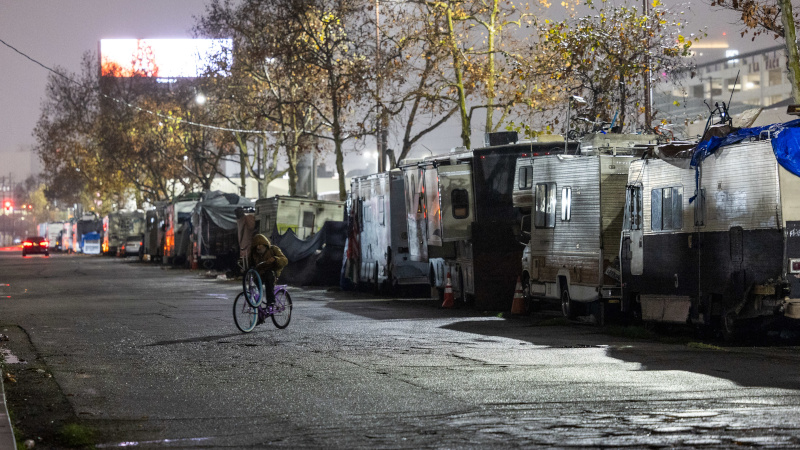Unprecedented increase in homelessness, as well as the oldest age for the median renter
Housing costs have continued to soar in the US following the COVID-19 pandemic, and the wages in the US have not been able to keep up with those costs. As a result, the US is experiencing an unprecedented percentage of homelessness.
Rates of homelessness have increased in the US by 12% from the year 2022 to 2023, and have increased by 48% since 2015, according to a January 25 report from Harvard’s Joint Center for Housing Studies. About 653,000 people reported experiencing homelessness in January of 2023. That is the highest single year increase for rates of homelessness in the US.
“In the first years of the pandemic, renter protections, income supports and housing assistance helped stave off a considerable rise in homelessness. However, many of these protections ended in 2022, at a time when rents were rising rapidly and increasing numbers of migrants were prohibited from working. As a result, the number of people experiencing homelessness jumped by nearly 71,000 in just one year,” the report says.
Rising housing costs have contributed to the trend, as states with average housing costs have seen an accelerated growth following the COVID-19 pandemic as people fleeing overcrowded cities with high rent costs sought rural and suburban areas with lower home and rent prices—thus, ballooning the housing market.
The states of Arizona, Ohio, Tennessee, and Texas have seen an increase in the number of unsheltered people in their state amid skyrocketing inflation that failed to keep up with workers’ wages.
“At last measure in 2022, a record-high 22.4 million renter households spent more than 30% of their income on rent and utilities. This is an increase of 2 million households over three years and entirely offsets the modest improvements in cost-burden rates recorded between 2014 and 2019,” the Harvard report says.
The Joint Center for Housing Studies found that those earning between $45,000 and $74,999 per year were hit the hardest from rising rent and were forced to—on average—spend 41% of their paycheck on rent and utilities.
“Rental markets are rapidly cooling after a period of significant overheating. Rent growth has almost completely stopped, following historically high rent increases in both 2021 and 2022,” the Harvard report adds. “While the slowdown is a welcome change for renters, asking rents still remain well above pre-pandemic levels.”
The median rent in the US was $1,964 in December of 2023, which is a 23% increase from before the COVID-19 pandemic. Inflation-adjusted weekly earnings for the median worker rose just 1.7% between 2019 and 2023, according to government data.
In addition, the report found that 3.9 million renter households lived in homes that did not meet “basic standards for suitability and safety” in 2021. The median age of renter-occupied homes also reached the oldest of any other recorded time in 2021 at the age of 44.
According to the Harvard report, the Biden administration has made “additional federal resources available to reduce homelessness” which includes $3.1 billion through the US Department of Housing and Urban Development’s Continuum of Care program. But the report adds that more affordable housing and rent subsidies will be needed to prevent further homelessness. Steve Berg, the Chief Policy Officer at the National Alliance to End Homelessness, doesn’t believe politicians are doing enough to address the issue.
“The work done by Congress just is not coming to terms with this housing problem,” said Berg. “Mayors around the country are talking about this trend but then not really doing anything to make affordable housing easier to get.”
Michael Yon joins Alex Jones to issue an emergency warning to those American and Texan patriots who wish to actively help protect the southern border.


